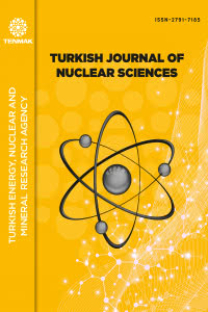Termal gücü 100 MW ve üzerinde olan tüm nükleer santrallerde meydana gelebilecek genel acil durumlar sırasında acil durum planlama bölgeleri içinde yaşayanlar için radyoaktif madde salımının meydana gelmesinden önce iyot tableti kullanımı ile beraber uygulanacak tahliye işlemi en çok tercih edilen koruyucu eylemdir. Bu sayede, bölgede yaşayan insanlar üzerinde oluşabilecek deterministik sağlık etkileri engellenebilir ve acil koruyucu eylemler ile diğer müdahale faaliyetlerinin uygulanması ilişkin uluslararası genel kriterlerin üzerinde radyasyon dozlarının alınması önlenebilir. Bu kapsamda, nükleer santral kaynaklı acil durumlar için acil durum planlarının hazırlanması sırasında tahliye planlamaları ve tahliye süresinin belirlenmesine yönelik analizler önem kazanmaktadır. Bu çalışmada, tahliye planlamalarına dair çalışmalar yapılırken üzerinde durulması gereken hususlar açıklanmış ve bu çalışmaların acil durum planlarındaki sunumlarının içeriklerine ilişkin bilgiler konuya ilişkin bilimsel makaleler ve ABD’nin düzenleyici ve teknik dokümanları temel alınarak verilmiştir. Tahliye süresinin belirlenmesi ile ilgili konular açıklanırken talep tahminlerinin oluşturulması, trafik kapasitesinin belirlenmesi ve kullanılacak analiz yöntemleri başlıklarının üzerinde durulmuştur. Tahliye planlaması ve tahliye süresinin belirlenmesi ile ilgili çalışmalar kapsamında konuya ilişkin düzenleyici ve teknik dokümanlarda yer alan hususların yanı sıra nükleer santrallerin yer aldığı ülke veya yöreye özel tahliyeyi geciktirici etkenlerin de dikkate alınması gerektiği sonucuna varılmıştır.
Anahtar Kelimeler:
Nükleer santral, acil durum, koruyucu eylem, tahliye planlaması, tahliye süresinin belirlenmesi, talep tahminleri, trafik kapasitesi
EVACUATION PLANNING AND EVACUATION TIME ESTIMATE ANALYSES METHODS FOR NUCLEAR POWER PLANTS
Evacuation with the use of iodine pills is the most preferred protective action before the release of radioactive material for those living in emergency planning zones during general emergency situations that may occur in all nuclear power plants with thermal power higher than 100 MW. In this way, deterministic health effects on people living in the region can be prevented and radiation doses above the international generic criteria for the implementation of protective actions and other response activities can be prevented. In this context, during the preparation of emergency plans for nuclear power plant emergencies, evacuation plans and analysis to determine the evacuation time estimate gain importance. In this study, the issues that need to be emphasized during the evacuation planning studies are explained and the information about the contents of the presentations of these studies in the emergency plans are given on the basis of scientific articles and regulatory and technical documents of USA. While explaining the issues related to the calculation of the evacuation time estimate, the topics such as the generation of demand estimates, determination of roadway capacity and analysis methods to be used were emphasized. Within the scope of the studies related to evacuation planning and determination of evacuation time estimate, it was concluded that the evacuation delay factors specific to the country or region where the nuclear power plants are located should be taken into consideration in addition to the issues stated in the relevant regulatory and technical documents.
Keywords:
Nuclear power plant, emergency, protective action, evacuation planning, evacuation time estimate, demand estimation, roadway capacity,
___
- 1) Conlow, L. (2008). Evaluation of the Emergency Evacuation Plan for the Oyster Creek Nuclear Power Plant. Middle States Geographer 41(1), 36-44.
- 2) IAEA. (2013). Actions to Protect the Public in an Emergency due to Severe Conditions at a Light Water Reactor, EPR-NPP Public Protective Actions. Vienna: International Atomic Energy Agency.
- 3) Lee, J., Jeong, J. J., Shin, W., Song, E., Cho, C. (2016). The Estimated Evacuation Time for the Emergency Planning Zone of the Kori Nuclear Site, with a Focus on the Precautionary Action Zone. Journal of Radiation Protection and Research 41(3), 196-205.
- 4) Tanigawa K., Hosoi Y., Hirohashi N., Iwasaki Y., Kamiya K. (2012). Loss of Life After Evacuation: Lessons Learned from the Fukushima Accident. The Lancet, 379( 9819), 889-891.
- 5) Urbanik T. (2000). Evacuation Time Estimates for Nuclear Power Plants. Journal of Hazardous Materials 75(2-3), 165-180.
- 6) U.S. NRC. (1980). Criteria for Preparation and Evaluation of Radiological Emergency Response Plans and Preparedness in Support of Nuclear Power Plants (NUREG-0654 FEMA-REP-1 Rev.1). Washington D.C.: United States Nuclear Regulatory Commission.
- 7) U.S. NRC. (1987). Pilot Program: NRC Severe Reactor Incident Response Training Manual (NUREG-1210). Washington D.C.: United States Nuclear Regulatory Commission.
- 8) U.S. NRC. (2005). Identification and Analysis of Factors Affecting Emergency Evacuations (NUREG/CR-6864). Washington D.C.: United States Nuclear Regulatory Commission.
- 9) U.S. NRC. (2011). Criteria for Development of Evacuation Time Estimate Studies (NUREG/CR-7002). Washington D.C.: United States Nuclear Regulatory Commission.
- Başlangıç: 1981
- Yayıncı: -
Sayıdaki Diğer Makaleler
